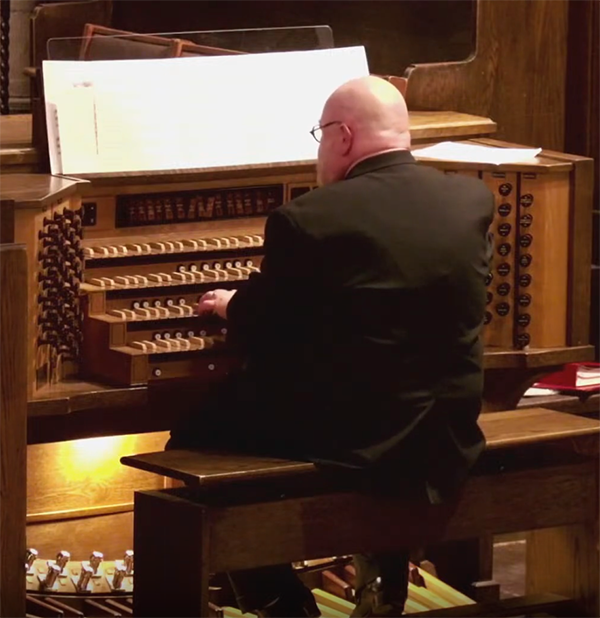by Daniel Hathaway

On Sunday afternoon, November 19, Sykes returned to help celebrate the 40th anniversary of the Arts @ Holy Trinity concert series with an engaging program of miniatures by William Byrd, Max Reger, and Louis Vierne, introduced and concluded by big works by Dietrich Buxtehude and Johann Sebastian Bach.
With a nod to his hosts and a twinkle in his eye, Sykes quipped in his opening remarks that his concert would begin and end with pieces by Lutherans.
Presented without intermission and lasting only 75 minutes, the recital was the perfect length for a late Sunday afternoon, and was offered via live stream, which is how I watched it (the video should still be available through this week).
That Peter Sykes is also a celebrated harpsichordist showed clearly in his efficient fingerwork and quiet hand positions in Buxtehude’s F-major Toccata. In both its fantastic sections and contrapuntal episodes his hands barely moved on the keys, but his fingers coaxed a variety of articulations from the Berghaus organ’s pipes. He deployed those skillfully, choosing reedy combinations for virtuosic gestures and foundation stops for quieter sections.
This is the 400th anniversary of William Byrd’s passing, and following the anonymous English Upon la me re — for which Sykes told the audience he would choose quiet stops to let the notes “float around” in the acoustic of Trinity’s Gothic space — he played the chaste counterpoint of Byrd’s Preludium to ye Fancie and Fantasia in a with expressive clarity.

There are multiple ways to register Bach’s great Passacaglia et thema fugatum, ranging from playing the entire work on a plenum to fussing with different stop combinations for each of the twenty variations. Both prove tiresome to the ear, and Peter Sykes wisely chose a middle path, producing a performance that made the architecture of the piece clear and exciting, and playing it flawlessly with a majestic sweep.
Published on ClevelandClassical.com November 21, 2023.
Click here for a printable copy of this article



